Under the osteochondrosis it is understood degenerative process in the intervertebral discs. The spinal column is compressed, crushing the disks that are to be found here between the vertebrae. With time, lose their elasticity, and will now begin to be used and the nerve endings of the spinal cord.
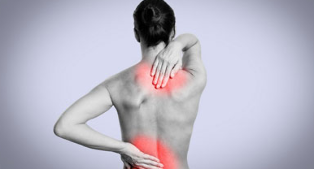
As with any other disease, the osteochondrosis should be treated under the supervision of a doctor. Later, we describe in detail, which is why the disease, why it occurs and what are the symptoms that are characteristic of him.
What is osteochondrosis?
The osteochondrosis is a disease of the spine, a trait that is and on the other hand, degenerative of the defeat of the intervertebral discs, and then the tissue of the vertebrae.
Dystrophic changes in the disc lead to the weakening of its outer fibrous rings. Therefore, in patients with osteochondrosis often lead to serious complications, such as the protrusion (bulging part of a disc) and spinal hernia (cantilever pulpous nucleus of the disc in the spinal canal).
According to the results of medical research, problems with the spine suffers one of every two people after 30 years. In 70% of cases, the cause of the pain in the spine is considered as the osteochondrosis, which refers to neurological diseases affecting the ligamentous apparatus of the spine.
Like any other disease, the osteochondrosis can not produce by itself, neither from that nor from this, affecting the back the acute pain. The first signs of osteochondrosis of the spine manifest themselves immediately, little by little.
Depending on the place of onset of pain distinguishes three types of degenerative disc disease:
- In the cervical region;
- Of breastfeeding and of the division;
- The Lumbar division.
Important! The main complications of osteochondrosis belong to the protrusion of the intervertebral disc, the herniation Schmorl's, ankylosis of the spine, the violation of roots of spinal nerves and vessels.
The causes of the
In the opinion of many specialists who made the study of this disease, the main cause of the onset of the degenerative disc disease is poorly distributed load on the spine. In consequence, the sick, directly on the ground, in which is excess of physical pressure, there is a change in the structure of the cartilage tissue.
The causes of osteochondrosis of the spine:
- Hereditary predisposition to the disease.
- The presence of diseases of the endocrine system – metabolic.
- The development of the orthopaedics diseases, for example, flat feet, curvature of the posture, diseases of the musculoskeletal system.
- A wide variety of lesions, injuries of the spine.
- Lifestyle: lack of activity, poor diet, with a predominance of dishes from fast food and harmful products.
- The presence of excess weight.
- Bad habits smoking, alcohol.
- The stress, the peruutusehdot.
- Pregnancy.
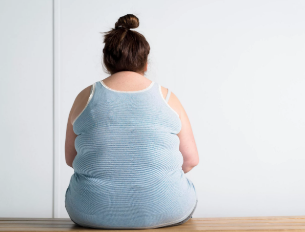
In most of the cases, the causes of the degenerative disc disease are related with the professional activity of the person. In the group of risk includes the following categories of professionals:
- accounting;
- atm;
- -IT of the workers;
- of the personnel office;
- the professional athletes;
- drivers of vehicles.
He noted, however, that the signs of the degenerative disc disease much more often manifest in women in the of the representatives of the stronger sex.
The stage of development
The development of the degenerative disc disease occurs in 4 selected from the stage (extent):
The osteochondrosis 1 stage
It is characterized by begin the pathological process in polipozom the nucleus of the intervertebral disc dehydration (dehydration), and in consequence of the height of the disc decreases. In the annulus fibrosus begin to appear cracks. In this stage, the patient usually does not feel any change. The discomfort can manifest when unusual for a man of the position of the seat or activates the load.
2 phase
In the second stage of osteochondrosis of the sequel of degenerative changes leads to a propeller disk. Reducing the slits between the vertebrae, occurs the destruction of the tissue of the capsule. Accordingly, we deny the roots of the spinal nerve, which causes the appearance of the maps of pain, whose intensity grows when it slopes, curves, other motions. It is possible the onset of weakness, decreased working capacity.

3 stage of osteochondrosis of the spine
It is characterized by the obliteration of the cartilage of the strip between the disks, the thinning of the fabric visible, if you do renthenznimky. The symptoms of osteochondrosis of the spine pronounced, are intense and pain attack does not happen, and removing your only are capable of powerful painkillers.
4 stage
The fourth stage is the neurological changes in the spinal system, which is expressed in a complete or partial limitation of mobility of the joints. With this diagnosis, the state in the place of vertebral connections are formed bony growths (osteophytes), which puts microtrauma nervous branches and segments of the spinal column.
In most cases, the symptoms of degenerative disc disease, 4 grade does not cause pain and unpleasant sensations, as well as the joints acquire petrified views.
The symptoms of degenerative disc disease in the adults
The osteochondrosis – and on the other hand, degenerative change (destruction of bone tissue of the spine, the cartilages of the joints, ligamentous of the unit and the intervertebral discs. With the course of the disease is pathological mobility of the spinal column, which is deprived of soft tissues, nervous fibers and blood vessels that are found here close to the affected area – as pain occurs.
The main symptoms of degenerative disc disease:
- the pain in the back, cervical region, back, shoulders and even the ribs;
- the discomfort, the stiffness of the back when some movements, lifting something;
- numbness of the extremities (hands and/or feet);
- the feeling of pain in the hands and feet, chills.
- the spasms of the muscles;
- the breakdown in the functioning of the genital organs;
- headaches, dizziness;
- the pain in the heart;
- the violation of the sensitivity;
- muscular hypotonia;
- fatigue, at times and in the eyes.
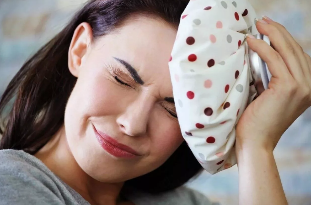
Promote the appearance of the symptomatology of acute excessive physical load, exhaustion, hypothermia, trauma, move the body and the effect of the vibration.
Complications
Degenerative processes that affect first the disks of the spine, leading to the reduction of the density, of the loss of the damping functions. The consequence of these changes is the excess of mobility of the vertebral column, the affected facet joints, muscles and ligaments.
Involved in the destructive processes of paravertebral of the structure causing the compression (pressure) of the spinal cord, its nerve endings. Because of this, the sick of the osteochondrosis feel the pain that is accompanied with these symptoms and diseases:
- strong headache, migraine;
- decreased visual acuity;
- the partial loss of the hearing;
- radiculopathy (low back pain);
- autonomic dysfunction (tir);
- disorder of the function of the urinary system;
- sciatica (pressure on the sciatic nerve);
- entrevertebral of the hernia;
- spondiloarthrosis;
- low back pain, low back pain;
- osteophytes, spondylosis;
- the spinal stenosis.
Worst of all is that along with the osteochondrosis you begin to appear for other diseases. The case is that damages sosudisto-nervous wreck, it gets worse the circulation of the blood, as a result of the disease of the whole organism in general.
The exacerbation of the degenerative disc disease
In the spring often begins the sharpening of the lower divisions of the spinal column, the winter extends from the chest of the division. The sharpening may be subject to changes in weather, stress, effort to a physicist. At the time of aggravation of the disease will prescribe medications for pain, local ointments, medications, remove the edema and spasm of the muscles. Use diuretics strong edema, but at the same time it is necessary to use the products of sodium and potassium.
The diagnosis
Diagnosis of degenerative disc disease is based on the following methods:
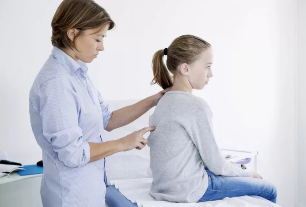
- The collection of the clinical history is the study of the complaints of the patient, and the elucidation of the time of occurrence, the causes, the duration, the characteristics of the manifestation of the disease.
- Physiological of the inspection:
- a diagnosis is made of the position of the body, the walk, the amount of movement of the patient;
- we study the epidermis for the detection of sites of redness, or peeling of the rash;
- palpable painful plots for the determination of the local temperature, the presence of oedemas, muscle cramps, stamps;
- for the detection of the phase of irradiation pain to percussion with the finger or a special hammer;
- the tingling sensation through the needle to help determine pain sensitivity.
Tools of methods of diagnosis of degenerative disc disease:
- X-ray diagnosis plays a critical role in this disease. Normal x-ray allows you to identify the symptoms of the disease, such as the narrowing of the slit between the vertebrae.
- Magnetic resonance imaging (mri) – a method of research that allows you to make an accurate diagnosis occur in the vertebral column of processes. With its help, in particular, can determine the presence grimestone disk and its location.
- Computed tomography (ct), which is close to their diagnosis of opportunities, to magnetic resonance imaging. The disadvantage of ct is the existence of the radiation load at the time of the study.
How to cure osteochondrosis of the spine?
There is No concrete and accurate of a method of treatment of degenerative disc disease, a process in all circumstances involves a holistic approach. If the doctor says otherwise, you must reflect on your professional qualification and reflect on the search for another health care professional.
The integrated program traditionally includes the following components:
- physical therapy intervention methods;
- special exercises and massage;
- the therapy methods of manipulation;
- the pharmacological treatment;
- reflexology, electrophoresis, etc;
- traction.
Recommendations in the treatment of osteochondrosis in the home:
- The rejection of bad habits, and the gradual transition to the sale of useful habits. The tobacco, the alcohol causes tremors and no pinched vessels of the artery spinal.
- The compliance of the diet is the renunciation of fatty cholesterol-containing products: eggs, broth, skins of birds and pigs.
- Limit the consumption of strong coffee and tea, which, little by little will go in for infusions and fruit juices-fresh.
- Proper mattress and pillow to sleep, preferably orthopaedic.
- To restore the normal circulation of the blood in Zatecka muscles and discs by massage, self-massage, the complex of physiotherapy exercises, compresses, rubbing, and receive infusions and cleaning cloths with alcohol tinctures of herbs.
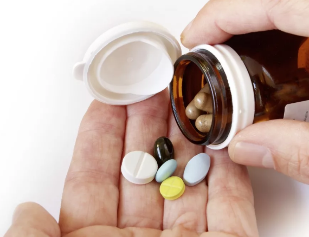
Medications for degenerative disc disease
Specialists in the treatment of this category of patients, are prescribed medicines, which possess the following properties: removed inflammatory processes, restore the function of the locomotor system, stimulate the regeneration of tissues of the intervertebral discs and the cartilages, prevent the progression of the degenerative disc disease.
The treatment of osteochondrosis goes in the traditional way of treatment of many diseases of the musculoskeletal system: assigned to nsaids for the resolution of the inflammatory process in the tissues, chondroprotectors to restore the level of synovial fluid and of corticosteroids, if the first two types of medications have not proven to be very effective.
Massage
To get rid of the degenerative disc disease, apply different therapeutic procedures, including massage. It has many beneficial properties — it is removed, the muscle tone, blood flow in the area of the spine is stimulated, the spinal discs become more firm.
The chiropractic to the osteochondrosis
Chiropractic removes acute pain, helps to recover the position. One of the most used methods is visceral therapy. During your celebration we performed a qualitative study of the joints, improve the processes of the circulation of the blood, strengthens the immune system. Helps to prevent the worsening of various diseases journals.
Lfk — therapeutic exercise
Therapeutic exercise or physical therapy to the osteochondrosis is very important. So, the special exercises to strengthen the muscles of the back contribute to the formation of corset muscle, which in turn provides a uniform distribution of the load on the spine. In addition, thanks to the regular practice improves blood circulation and nutrition of tissues, including the intervertebral disc, the patient produces the correct posture, increases the amount of movement in the spine.
For therapeutic exercise and gymnastics brought the expected effect, it is necessary to abide by the following rules:
- Exercises at the osteochondrosis it is necessary to perform regularly.
- All the movements should be soft and slow.
- The breathing should be smooth.
- Careful with the frequency of the pulse.
- If you encounter aches and pains in the muscles and the spinal column is necessary to reduce the amplitude and intensity of the movements.
- Gymnastics and physical education can be practiced at any time of the day.
- For the most important types of treatment of the gymnastics and physical education choose comfortable clothes out of the fabric.
- Before you begin the curative treatment of gymnastics and physical education should consult with a doctor.

Physiotherapy
It helps to effectively fight painful manifestations in places of localization of pathological process. There are many types of physical therapy exposure. More often resort to the use of ultrasound devices, therapy, as well as exposure to currents of low frequency.
Effects of thisprocedure can be:
- the normalization of metabolism in infested areas;
- the increase of the resistance of the organism;
- the anesthesia;
- improves microcirculation in the spine and paravertebral tissues;
- removal of edema;
- the reduction of the inflammatory process;
- improvement of the mobility of the spine.
The osteochondrosis, as with any other disease of the spinal column requires treatment immediately. When the first symptoms appear, contact your orthopaedic. Greetings!































